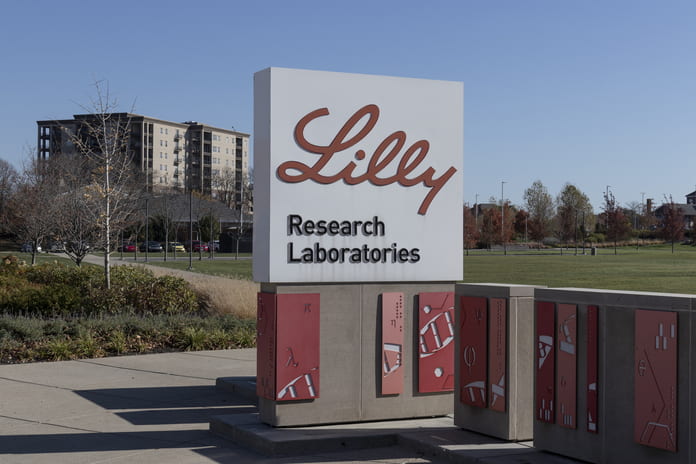Pharmaceutical companies, especially large ones, are often considered excellent defensive investments in an uncertain economy. Among the well-known names in the sector are Pfizer, Johnson & Johnson, Novo Nordisk, Merck, AbbVie, Novartis, and Eli Lilly and Company (NYSE:LLY). Currently, Eli Lilly stands out as a top stock choice due to its strong financial performance and robust drug pipeline.
With a market cap exceeding $800 billion, Lilly boasts a diversified product portfolio that includes a solid lineup of new, successful drugs. The company focuses on high-growth areas such as diabetes, neuroscience, oncology, and immunology, which offer significant commercial potential. Over the past few years, Lilly has received approvals for several new drugs and achieved pipeline and regulatory successes. The company consistently reports strong revenues and profits, effectively managing patent expirations and increasing competition.
New Drugs Drive Top-Line Growth
Lilly’s success with tirzepatide, a dual GIP and GLP-1 receptor agonist marketed as Mounjaro for type II diabetes and Zepbound for obesity, has been notable. The GLP-1 segment is critical for treating multiple cardiometabolic diseases and is gaining popularity. GLP-1 drugs mimic the hormone GLP-1, promoting weight loss, lowering hemoglobin A1c (HbA1c), and reducing cardiovascular risks.
Mounjaro was launched in mid-2022, and Zepbound in November 2023. Despite their recent market entry, both drugs have become significant revenue drivers for Lilly, with growing demand for weight loss medications. Tirzepatide is also being developed for other conditions, including obstructive sleep apnea (OSA) and metabolic dysfunction-associated steatohepatitis (MASH). Phase III studies indicate tirzepatide significantly improves OSA severity, and Lilly plans to file for regulatory approval in mid-2024. Analysts predict tirzepatide could generate around $25 billion in peak sales.
In 2023, Lilly also gained approvals for Omvoh for ulcerative colitis and Jaypirca, a BTK inhibitor, for mantle cell lymphoma and chronic lymphocytic leukemia. These new drugs, alongside Mounjaro, Zepbound, Ebglyss, and Jaypirca, are expected to contribute significantly to Lilly’s revenue in 2024.
Donanemab: A Key Pipeline Asset
Donanemab, a treatment for early Alzheimer’s disease, is a crucial asset in Lilly’s pipeline. An FDA committee recently voted unanimously to recommend its approval, despite some safety concerns. If approved, donanemab would be the second drug on the market to treat Alzheimer’s disease and could generate blockbuster sales.
Studies have shown donanemab significantly reduces amyloid buildup in the brain and plasma phosphorylated tau (P-tau) in the blood, key biomarkers of Alzheimer’s disease. Their reduction is likely to predict clinical benefit in treating early Alzheimer’s disease.
Stock Performance and Rising Estimates
Lilly’s stock has soared by more than 650% over the past five years, driven by its promising pipeline, particularly its obesity drugs. In the past year alone, Lilly’s stock has risen 96.8%, compared to a 27% increase for the industry.
Estimates for Lilly’s 2024 earnings have increased from $12.52 to $13.61 and from $18.50 to $19.28 for 2025 over the past 60 days. Its trailing 12-month price-to-sales ratio has more than doubled to 19.75 from around 9 in 2021, with revenues rising from $28.3 billion in 2021 to $34.1 billion in 2023.
Conclusion
While other large drugmakers face challenges, Lilly remains strong. Companies like Pfizer and Moderna are dealing with declining sales of their COVID-19 vaccines and drugs. Johnson & Johnson faces upcoming patent expirations and talc litigations, and other big names like AbbVie, Merck, Biogen, Gilead, and AstraZeneca are battling generic and biosimilar competition.
In contrast, Lilly’s revenue growth is driven by high demand for drugs like Mounjaro, Verzenio, Jardiance, and Taltz. New drugs, rapid pipeline progress in obesity, diabetes, and Alzheimer’s, and regular M&A activity support its stock performance.
Novo Nordisk is the only other large drugmaker to have generated similarly impressive returns, primarily due to its successful semaglutide drug. However, despite its supply challenges, Novo Nordisk’s Wegovy is showing strong prescription trends and generating significant revenues and profits.
Lilly’s sales and profits are expected to grow at a much higher rate than the average large drugmaker, supported by its new drugs and pipeline potential.
Featured Image: Megapixl© Jetcityimage















